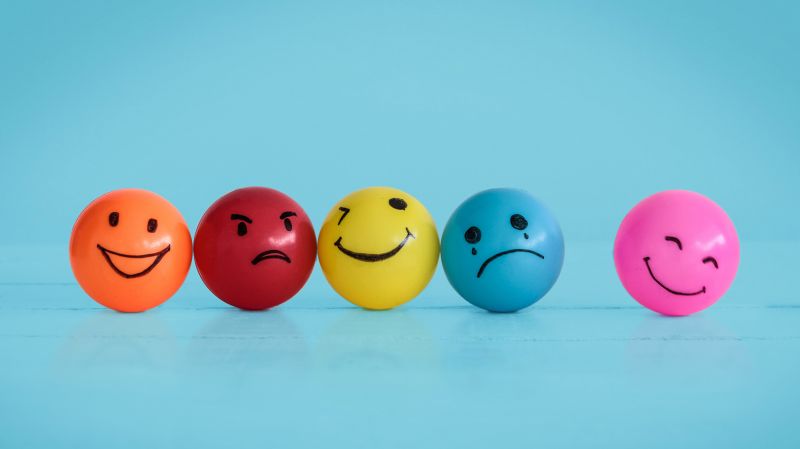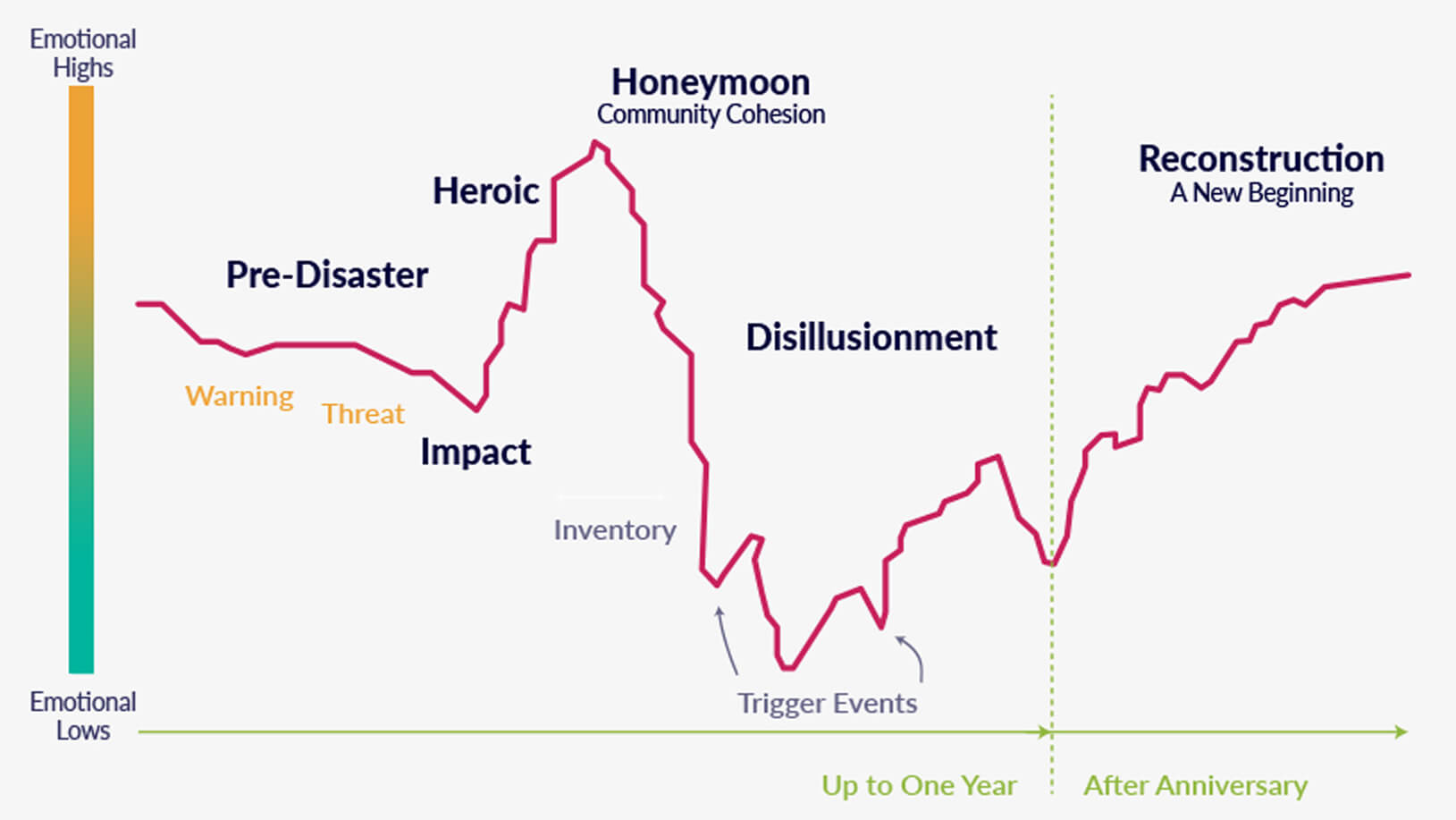The Next Stage of the Crisis is Upon Us
For business leaders, dealing with coronavirus was tough. Now comes the hard part

By Kathryn Brohman and Dane Jensen
As COVID-19 restrictions begin to loosen, and hope starts to appear on the horizon, it is important for organizational leaders to prepare for what comes next. Without a doubt, the upcoming 12 months will play a key role in defining who you are as a leader. The way you act will be seen by customers, employees and suppliers as a true test of your ability to rally people in times of trepidation and uncertainty. If you get it right, this may well be the most important year of your career.
Research on leading through crises suggests that trust and integrity evolve from acute awareness and management of emotions. Emotional IQ is an essential leadership skill in all environments. But in a crisis, managing emotional highs and lows is a more challenging—and often more vital—task.
If history helps us predict the future, our journey through the COVID-19 pandemic will evolve in six stages of emotional highs and lows: pre-disaster, impact, heroic, honeymoon, disillusionment and reconstruction (see chart on this page). To date, we’ve gone through three of these stages, we’re near the end of the fourth, and, so far, we’ve been pretty much on point as to what has occurred in each stage.
Inspiring heroic efforts
During the pre-disaster stage, as one would expect, people’s emotions deteriorated as warnings led up to the March 11 pandemic announcement by the World Health Organization. The impact stage followed. Uncertainty triggered by school closings and the temporary shutdown of all non-essential services caused emotional responses appropriately described as fear and tribulation.
What came next was less expected: an amazing display of community cohesion, extra effort and higher productivity. Prior to COVID-19, our collective research and coaching experience coalesced around one major theme that we both write about in our books. When executing in times of risk and adversity, most organizations tend to play things safe. This is contrary to the massive lifts we’ve seen over the past two months that required extraordinary extra effort on the part of so many.
These heroic efforts inspired emotional highs in employees and customers as companies achieved the impossible. Some specific heroic efforts we have come across within organizations include the transition of 82 per cent of employees to working from home in three days, the launch of a new e-commerce platform in five days, and the installation of Plexiglas shields in thousands of stores across the country, seemingly overnight. All this was accomplished by people working 18-hour days for 14 days straight.
This is what researchers Zunin & Myers call the “honeymoon phase.” As people pulled together to accomplish great things, we also noticed an amazing number of people helping others. So many felt inspired, grateful and willing to “do our part”—even if we were exhausted and overworked.

Adapted from Zunin & Myers as cited in DeWolfe, D. J., 2000. Training manual for mental health and human service workers in major disasters (2nd ed., HHS Publication No. ADM 90-538). Rockville, MD: U.S. Department of Health and Human Services, Substance Abuse and Mental Health Services Administration, Center for Mental Health Services.
Responding to disillusionment
Our indicators suggest that most companies are now somewhere in the back half of the honeymoon phase. Governments have done their job by making billions of dollars available for support and assistance. Now the process of gradually re-opening the economy begins. People are feeling somewhat optimistic that things will start to return to some degree of normalcy.
But organizational leaders should not take all this as a sign that they can relax. In fact, now is the time for them to up their game. Research shows that the honeymoon phase of a crisis is short—typically only a few weeks. And through our work, we can confirm some companies have definitely surpassed this emotional peak. They’ve started toward what we anticipate will be a much longer period of disillusionment. Other indicators also suggest the disillusionment phase of this crisis is upon us.
Small business owners are starting to realize the limits of government assistance to stem losses. Employees are beginning to feel the strain of pulling long days over weeks at a time with the specter of job losses hanging over them. Everyone is beginning to chafe at the prospect of additional weeks without social contact. Then there’s the dreaded “second wave” of the virus on the horizon.
So, what does history tell us about where we are headed? We offer three guidelines to help leaders prepare.
-
This disillusionment phase will last much longer than the honeymoon phase. The downward emotional journey will bring us to the end of 2020 for sure, and perhaps longer if additional trigger events occur, such as a recession or a second phase of social distancing to flatten the curve.
-
Leaders need to embrace uncertainty at an entirely new level. People will soon realize that supports and assistance are limited and there is no going back to normal. “Unknown unknowns” is the guideline here. It will be our reality for some time to come.
-
Finally, the need for deep-rooted change is imperative. Through COVID-19, companies were admittedly surprised by what they were truly capable of. In fact, an inner-entrepreneurial acumen emerged that for many was synonymous to Mark Zuckerberg’s famous motto “Move fast and break things.” From this perspective, going back to normal would be a mistake, and leaders need to figure out how to prevent it from happening.
So, moving forward, what we know for sure is that emotional lows are upon us. Pressures from financial loss, family discord, health problems and bureaucratic hassles, combined with uncertainty and expectations for changing the way we live and work, will trigger discouragement and stress.
We suggest two great antidotes—growth and contribution—that give an alternative meaning to pressure. When people feel they are getting better at something that matters to them, it changes their perception of pressure. When they feel they can contribute in some way, it imbues the pressure with a sense of purpose.
In the midst of unprecedented disruption, pressure is a constant. Leaders who can help people embrace pressure to move towards new peaks of personal growth will help them experience a sense of contribution in the midst of uncertainty and change.
These are the leaders who will emerge from the valley of disillusionment.
Kathryn Brohman is associate professor and Distinguished Faculty Fellow of Management Information Systems at Smith School of Business and co-author of Shift: A new mindset for sustainable execution. Dane Jensen is an expert on strategy and leadership. As CEO of Toronto-based Third Factor, he advises CEOs and senior leaders in both sports and business. He also teaches in the full-time and Executive MBA programs at Smith.